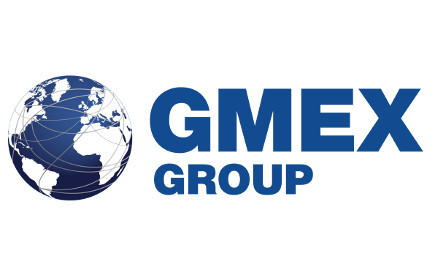Time for Security Token Offerings (STOs) and Initial Coin Offerings (ICOs) to move over? Hirander Misra explores how investors could leverage Initial Exchange Offerings (IEOs) as the perfect fundraising model that offers the security of the traditional exchange while building on the brave new world of blockchain solutions and tokenisation.
ICOs, STOs and IEOs are all forms of crowdfunding models. During an ICO, STO or an IEO the issuers – usually the entity raising money for the project – sell tokens to a group of investors. These token sales are typically not restricted by jurisdictional boundaries, barring some exceptions.
This democratised process means that anyone globally can participate in the token offering therefore enabling a much greater geographical outreach than more traditional fundraising like an Initial Public Offering (IPO) on a traditional stock exchange or venture capital funding.
How did the market build up to IEOs?
With the first token issuance held by Mastercoin in July 2013, ICOs were intended to be a new form of fundraising but without the hassle of excessive paperwork, financial modelling or regulatory approvals that doomed many a blockchain project at conceptualisation stage.
Just as 2017 was being crowned the year of ICOs, it turned out that some investors had burnt their fingers in fake ICO projects. While this resulted in the decline of ICOs, it opened the door to a new type of token offering during 2018, the Security Token Offering (STO). STOs are asset tokens which are backed by the underlying security being tokenised, with the aim of delivering superior project and investment oversight compared to ICOs.
However, even as STOs gain more traction, their primary issuance for capital raising is largely Over-The-Counter (OTC). This means that that investors are committing funds with the absence of clearing guarantee funds, credible digital custody and risk management to questionable counterparties or directly to the entity, which may be an early stage start-up with the associated credit risk that such an entity entails.
Lately, some traditional stock exchange groups and cryptocurrency exchanges have announced plans to establish digital exchange projects focussed on security tokens and some, as an alternative expression to an STO, term the listing of products on their exchange as Initial Exchange Offerings (IEOs).
What is an IEO?
An IEO is a type of ICO or STO, however, unlike an STO or ICO in which anyone with a crypto-wallet can participate, IEOs are exchange specific. With an IEO, the exchange handles the whole process of token allocation and listing by acting as the counterparty as opposed to it just being a listing venue.
In contrast to the entity that may be conducting the STO or ICO by handling it and seeking to raise funds with their newly issues tokens directly, you need to be a participant of the exchange that is conducting an IEO and buy the tokens using your account at the exchange. The participants then fund their exchange wallets with coins or provide designated Fiat currency contributions to a legal escrow account and utilise those funds to buy the issuing company’s tokens.
How do IEOs compare with STOs and ICOs?
Economies of scale, lower costs and easier administration: IEOs take place on digital exchanges which act as intermediaries to perform due diligence on a project as well as those looking to invest into (including Know-Your-Client and Anti Money Laundering checks), marketing and selling tokens to investors. The exchange offers economies of scale by leveraging its existing network to shoulder some of the cost burden related to the whole process and can open it up to all its participants. ICOs and STOs, on the other hand, are undertaken by the entities fundraising themselves, with all the associated costs related to due diligence, marketing and running the overall process.
A more trusted process: Whilst some people prefer ICOs due to the fact that they are more public, there is no doubt that trust in ICOs has been shaken due to the various fraudulent issuances, therefore leading to their decline. With STOs too, investors run the risk that if inferior companies are subject to an STO, the STO will also end up with the same issues. On the other hand, the exchange which launches the IEO is also responsible for monitoring the process in terms of oversight and administration. We believe that credible exchange will look to vet projects and offer credible IEOs to keep their reputation intact, which will help weed out questionable initiatives.
A less complex process: With ICOs/ STOs, you must consider where and when they are occurring to determine how to participate, however with IEOs you can participate from the outset. If the IEO is on an exchange site that you are registered with, there is no longer any need to register using questionable web sites or look into what payment methods the project accepts. Nor is there any need to manage on-chain transactions with different wallets on different blockchains. Instead you just log onto the exchange site and make your contributions in the appropriate manner via your account.
The appended table outlines the areas in which IEOs give investors an edge over ICOs and STOs in taking advantage of the full spectrum of an investment opportunity:
Diagram: IEO vs. ICO & STO

In Exchanges We Trust
Some blockchain experts are against IEOs because they believe that their centralised process is against the core value of blockchain, which is decentralisation. However, IEOs provide an increased level of trust compared to standalone ICOs or STOs. As a result, IEOs have the potential to become the standard model for raising funds in the digital assets space. The early statistics too seem to support this theory, with some phenomenal growth in IEO activity over the last year.
Ultimately, if conducted by bona fide exchange operators, IEOs hold the potential to revolutionise fundraising not only for start-ups but also existing businesses. They can provide both retail and institutional investors with credible investment opportunities to satisfy their increasing demand for digital assets. May their wish for good investible projects be granted!





